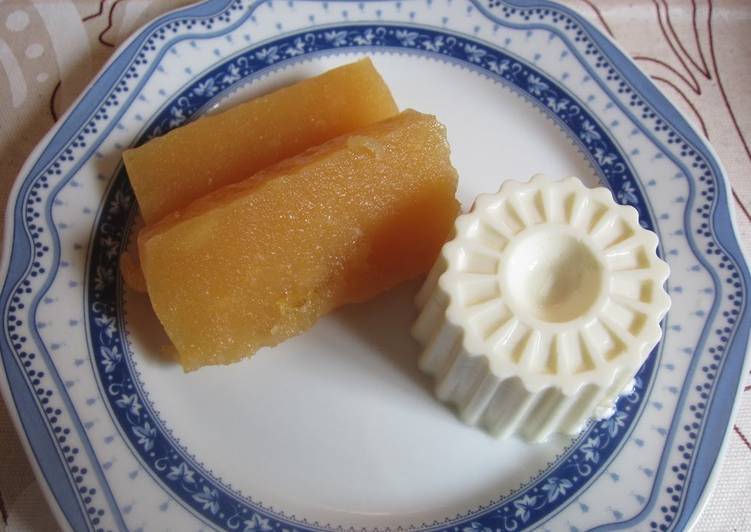Recipe: Yummy Quince Jelly (Carne de Membrillo)Solution
Buy Quince Jelly (Carne de Membrillo) promo.
 You fix toasting sauté Quince Jelly (Carne de Membrillo) using 3 ingredients including 22 steps. Here you are do.
You fix toasting sauté Quince Jelly (Carne de Membrillo) using 3 ingredients including 22 steps. Here you are do.
ingredients of Quince Jelly (Carne de Membrillo)
- use 3 of kg, weighed after peeling and removing the stem ends Quince (or "membrillo" in Spanish).
- This 1 1/5 kg of Sugar.
- also 2 of Lemon (optional).
Quince Jelly (Carne de Membrillo) compound
- Preparing the quince is rather hard work. So, I recommend making no more than about 3 kg of fruit at a time. That should be about 5 kg before peeling..
- Wash the quince well. Rub the fine downy fuzz off of the surface..
- To prepare the quince: Put the quince and water in a large pot. Bring to a boil and cook the quince until they are tender..
- Note: It's best to immerse the quince completely in water. I had too many fruit in the photo, so I boiled them with the lid on, and shifted the fruit on top around to cook them through..
- Take the fruit out of the hot water and let them cool down. Peel them and remove the stem ends. Roughly chop up the fruit and place them in another pot or in a storage container..
- (You don't have to peel the quince in advance. If you boil the quince until they are falling apart, then the skin and the outer part of the flesh can be removed together.).
- When the fruit has been processed, weigh it out. Calculate 40% of that weight and that will be the amount of sugar to use. (You can increase or decrease the amount to taste.).
- Mash the fruit using a hand-held blender or similar device. Put the mashed fruit in a pot..
- Note: If there's a lot of fruit, it can be difficult to work with, so I recommend mashing it up in the pot first. If you can mash it about 80% of the way, by the time it simmers and reduces it should have just the right consistency..
- Add the lemon juice and sugar to the pot, and start cooking over low-medium heat. Simmer and reduce slowly while mixing. Be careful not to burn yourself..
- You may get burned if the contents of the pot splatter, so don't leave the pot unattended for too long. Stir while simmering and reduce it over low-medium heat..
- Note: If you see any impurities while you're simmering the pulp, remove them with a spoon..
- While you're simmering the pulp, spread a sheet of parchment paper on a flat container (such as an oven baking tray), lining it right up to the edges..
- When the pulp turns orange, remove from heat. Pour the pulp into the prepared tray. Be careful not to burn yourself..
- I cooked 3.5 kg of fruit (after peeling) for a bit more than 2 hours. As shown in the Step 11 photo, the volume has reduced by about 10%..
- Note: This version doesn't have a lot of sugar, so it won't turn brown like commercially sold quince jelly..
- Dry the jelly in a cool location out of direct sunlight. (If you use 40% sugar, this takes 5 days to a week.).
- Slice into pieces. Wrap each piece in plastic. Freeze to store for a long period. Refrigerate any pieces you're going to eat it right away..
- Note: The top surface should be firm and the bottom surface still soft right after you finish drying. If you wrap the pieces up and store them with the firm side down, the texture will gradually even out..
- Note: Of course, you can flip them over, peel off the paper and dry the other side too. You can dry the fruit even further to turn it into a moist dried-fruit type dessert..
- Note: The step-by-step photos show 3.5 kg worth of fruit pulp. I had 7 kg of fruit pulp in the Step 1 photo, so that may give you an idea of the total weight..
- Slice thinly and serve with fresh (un-aged) cheese or on bread. You can also serve it on its own, of course..
Ingen kommentarer: